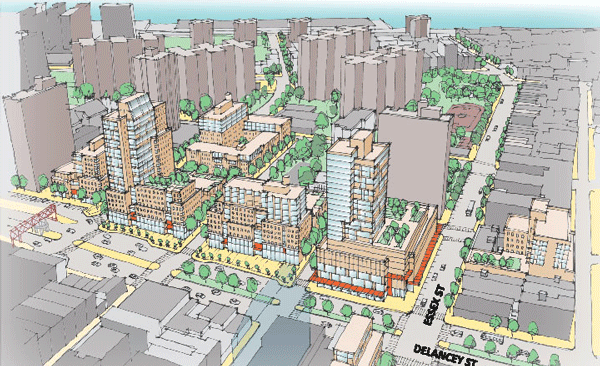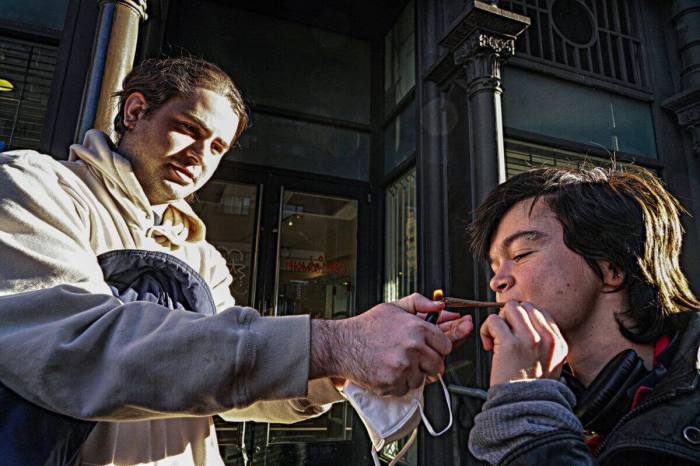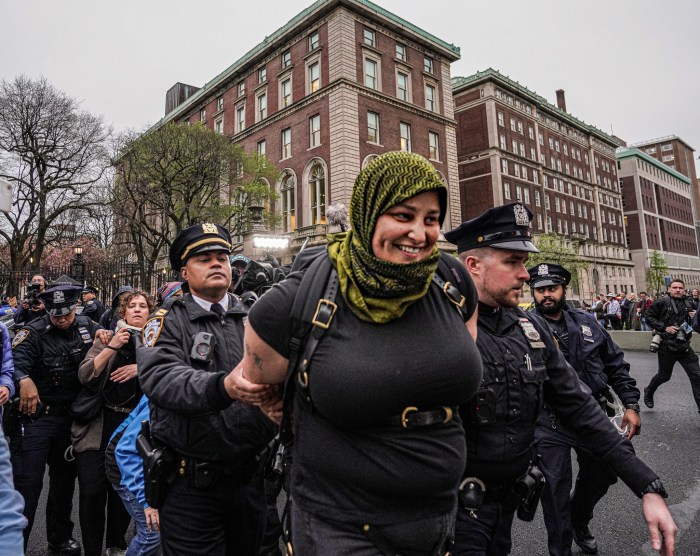BY ZACH WILLIAMS | Gary Barnett, the head of Extell Development, told the C.B. 3 Land Use Committee last week that his company would replace the former Lower East Side Pathmark supermarket, as well as construct 204 new affordable housing units at the site.
However, at the June 18 meeting, committee members and residents alike criticized the current plans for the project, which will include a 68-story condo tower at 250 South St. — plus a supermarket in the building’s base — while the affordable units will be in a separate 13-story building on the same parcel, with a separate address, 229 Cherry St.
“Segregation is segregation and that’s what this is,” said Nancy Ortiz, a committee member.
But financing a mixed-use building under current market conditions would be impossible, Barnett said. Furthermore, prospective condo buyers would not be able to secure mortgages through banks and Fannie Mae if their properties were to be located in the same building as affordable housing units, according to Barnett.
“If we had to put all the affordable [units] in the building, it would now be 15 stories higher, that much taller, longer to build, much more expensive,” he said.
Responding to numerous residents’ concerns, Barnett said his company would work with Community Board 3 and residents to mitigate construction noise and traffic disruptions; install more nighttime lighting at the site to improve safety; and give additional updates throughout the construction.
The presentation from Extell included numbers aimed at garnering support from residents, including a planned 50 percent lottery preference for C.B. 3 residents applying for the affordable housing. There will be 49 studio apartments for $833 per month, 50 one-bedroom apartments for $895 per month, and 105 two-bedroom apartments for $1,082 per month. A commercial plaza between the buildings would accommodate a 25,000-square-foot grocery story and 8,000-square-foot pharmacy, as well as a smaller business, such as a coffee shop, Barnett said.
Foundation work at the site will begin in three months with completion of the entire project expected about three years later, according to Extell. Specific commercial operators have yet to be determined, but Barnett added that the developer welcomes the community’s suggestions.
Current real estate prices and construction costs, however, make building affordable housing more difficult than it once was, according to Barrett, who earlier said that “perfection is the enemy of achievement.”
“Most of the affordable housing that’s been done in the city has been stand-alone projects,” he explained. “There’s been a lot of stand-alone projects where you could get the land cheap; so, you could afford to build affordable housing by itself.”
By constructing the affordable housing units on site as 20 percent of the project’s overall residential space, the company will qualify for tax breaks over the next two decades. Eventually the company will cede ownership of the affordable housing units to a community organization yet to be determined, Barnett said.
“One of the benefits of a separate building is that all of the units are permanently affordable,” he stated.
Committee members and residents disagreed with the notion that it would be “impossible,” as Barnett said, to mix affordable housing with condominiums in the residential tower. They said examples of mixed-income housing abound.
Affordable housing’s presence in the same building would not likely affect the ability of a condo buyer to secure a mortgage, according to Lawrence J. White, an N.Y.U. economics professor and expert on the mortgage industry.
“It seems odd that Fannie would not buy an individual mortgage loan from an originator by an otherwise perfectly suitable borrower who had all the requisite conditions,” he said in a phone interview.
Contention at the meeting, though, didn’t end with Extell’s presentation.
Local resident Samuel Vasquez charged that the lack of Spanish translation kept some people from actively participating.
“This board needs to show a real reflection of the community. These people out here, they are minority groups,” he said of the audience members. “Up here, the majority is what? Caucasians,” he said of the committee.
The comment elicited some applause, gasps and a stern response from Ortiz, who suggested Vasquez has priorities beyond fully participating in the community board process.
“You don’t show up until the cameras come out,” she said.


















